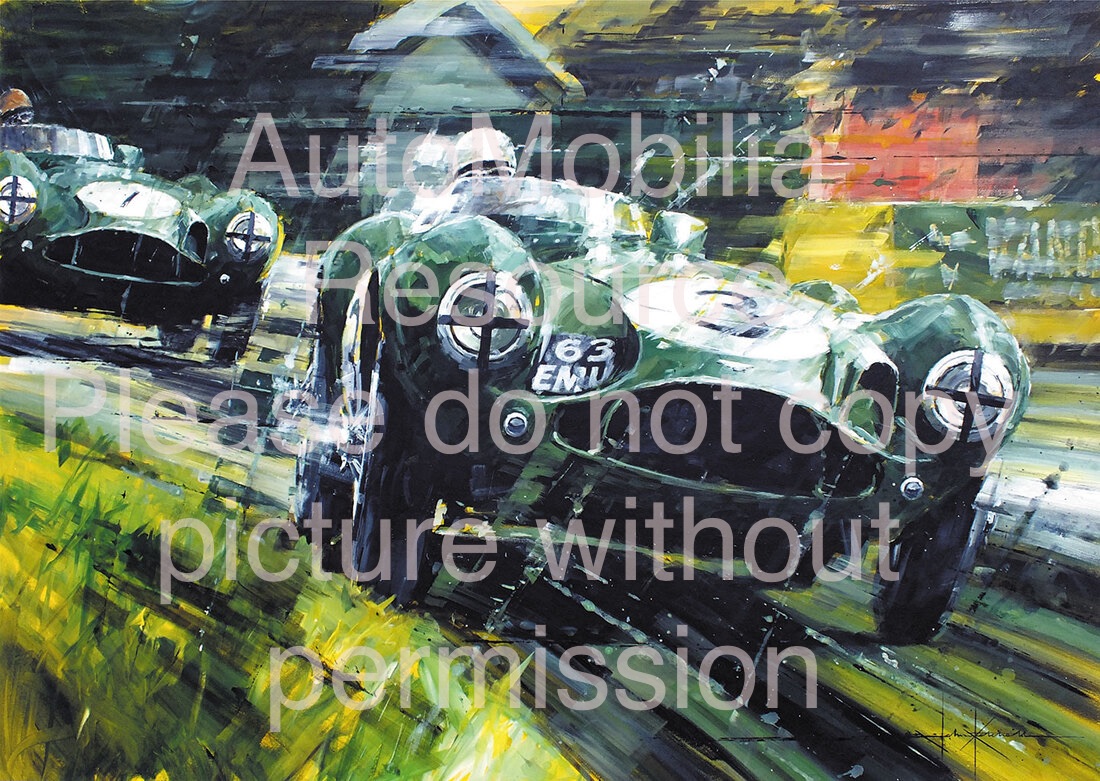|
Nov/Dec 2020 edition Issue #13 AutoMobilia Resource Magazine Rupert Whyte Synesthesia or emotion? One, confusion of the senses, the other goosebumps, heart pumping, a slight knotting in the stomach. Stand alone, studying a large John Ketchell canvas – you feel both. Your imagination runs wild! How can you hear and feel so much from an inanimate object? There’s no doubt these paintings can play tricks on the mind. “I like painting anything that goes fast,” John says. “Aircraft, horses, whatever, but cars are the thing I really love. I can’t stand doing paintings of still cars. I always try to introduce a bit of movement.” John has a tendency to make light of his talent. Take a painting such as Storming Drive, which shows the Posey / Bucknum Ferrari 512S blasting through the rain-soaked darkness at the 1970 24 Hours of Le Mans, and you’ll see that “a bit of movement” doesn’t begin to describe it. John was able to draw from an early age and always liked cars. After school he went to do an engineering degree. “I enjoyed the drawing and sketching much more than the workshop time,” he confesses. “A new art school had just started up in Preston, and seeing the people there were having more fun than me, I decided to join them.” A long career as an illustrator and designer followed before John decided, at 52, “to pack it in” and become a full-time artist. The way John uses his acrylics now is a technique he has developed over time. “When I first started, my paintings were much tighter. I quite liked them, and people seemed to buy them, but I thought they were boring and so started working in a looser style.” John’s paintings may look like brushstrokes thrown quickly onto a canvas, but look carefully and you will see that each has been carefully considered before being applied, and the draftsmanship beneath is second to none. Everything in perfect proportion and rendered with just a few dabs of paint with a flat-ended brush. There’s clearly still an engineer in there somewhere. Each painting starts out as a pencil or color rough, about 8.25"x11.75", which is then worked up into the final artwork. John works from a stack of reference material crammed into his small studio alongside his brushes, paints and canvases. Books, magazines and a large library of photographs he has taken at places like Goodwood and Silverstone. John’s favorite subjects are the GP cars of the 1930s and the sports prototypes of the 1960s and ’70s. “Modern photographs of these are useful, but many of the cars I like to paint do not exist any longer, or at least not in their original form, and so it’s period images that I need as references – I often use many photographs to build up an image,” he says. “Sometimes I have to use artistic license to achieve the image I want, but you have to do the best from the reference material available. I always have an idea in my mind of how the painting will look when it’s finished. Sometimes they turn out better.” “There are times when I feel I need a diversion from cars. Now and then I’ll do a portrait, or some horses or an airplane, just to make sure painting cars never starts to feel like “work.” I approach every painting as if I were painting it for myself, and luckily other people buy them.” Indeed, his work has long been in demand among collectors, including Luca di Montezemolo, who hung a Ketchell canvas in Enzo’s old office during his time at the helm of Ferrari. Original paintings from £1,500 (approx. $1,970 USD); Limited edition prints from £49 (approx. $64 USD). PLEASE NOTE: currency rates fluctuate, US dollar prices are all approximate. Rupert Whyte To read more great automotive art columns like this one from Art expert Rupert Whyte...
|
Automotive Art ColumnRupert Whyte has a love of motorsport and an ever-growing collection of automotive art and automobilia. He founded Historic Car Art in 2004 which is now the pre-eminent publisher of automotive fine arts and a respected dealer in original works and vintage posters. ArchivesCategories |
Home
|
Subscribe
|
|
Automobilia Resource LLC
1217 Cape Coral Pkwy East #178 Cape Coral, Florida 33904 Main office: 954-579-5280 Subscriptions: 224-558-8955 Editor: 631-258-9887 |
Copyright © 2023 Automobilia Resource LLC. All Rights Reserved






 RSS Feed
RSS Feed